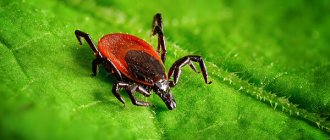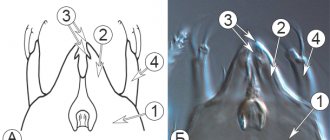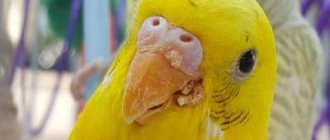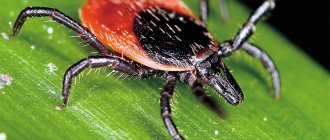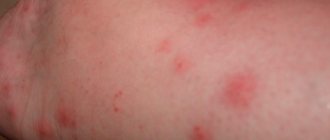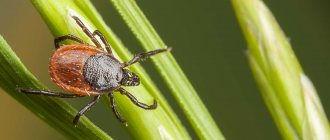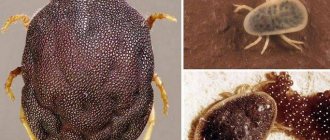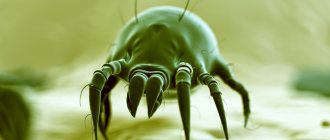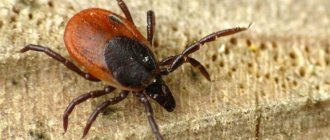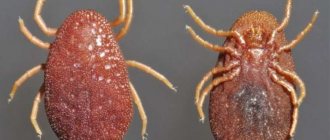Gamasoidea mites are a superfamily of mites. According to taxonomy, gamasid mites belong to the order Parasitiformes, subclass Mites (Acarina), class Arachnida. The group of gamasid mites includes about 20 families and 300 genera. These small arthropods live everywhere.
Some gamasid mites are predators that actively hunt other small invertebrates, or are omnivores, while other types of gamasid mites have become parasites and feed on the blood of mammals, birds and reptiles.
Where do they come from?
Gamasid mites are a superfamily of mites from the order Parasitiformes from the subclass Mites and the class Arachnids. The group contains approximately 20 families and 300 genera, which are capable of living everywhere.
A significant part of the species leads a predatory lifestyle, being omnivores or attacking small invertebrates. The remaining species become parasites and consume the blood of mammals, birds and reptiles.
Gamasid mites are tiny creatures with a body length of 0.2 to 3.5 millimeters. The body is ovoid or oval in shape, and is also colored yellowish or brownish. But if the parasite has already drunk blood, it turns scarlet. Externally, the creature is distinguished by a body divided into two parts, which consists of:
- Torso with chitinous cover.
- Oral apparatus.
There are 4 pairs of limbs on the tick's body, and the mouthparts are a small proboscis that is capable of piercing the skin of victims. Initially, the parasite pierces the skin with sharp chelicerae, and then touches it with pedipalps. Respiratory processes are carried out through tracheas located on the side of the body.
The development process of gamasid mites can be divided into three stages:
- Egg formation.
- Transformation into a larva.
- Nymph I (protonymph).
- Nymph II (deuteronymph).
- Adult tick.
The fertilization process is carried out as follows: male representatives fix a spermatophore (sac with sperm) to the female’s body through chelicerae. Some species reproduce through parthenogenesis, i.e. females lay eggs, from which viable larvae are then formed. There are also viviparous varieties of gamasid mites. The development of their eggs takes place inside the female’s body, after which a larva or protonymph emerges from it. Due to the impressive size of the eggs, the female cannot lay more than one egg at a time.
At different stages of development, the tick looks completely different. If the larvae have only six legs and are not able to eat food, then the protonymph also develops a fourth pair. In addition, it has a whitish color, soft covers and demonstrates increased activity. Deuteronymphs are covered with a dense crust and are characterized by a yellowish or brown tint.
Appearance
Gamasoid mites are not large in size. An adult specimen barely reaches 2.5 mm. The average dimensions are about 1 mm, so the morphology of the tick can only be examined in detail in a photo or under a microscope:
- oval-shaped body covered with chitin;
- the color is yellow, brown, reddish tones and depends on the habitat;
- the imago has 4 pairs of thin legs;
- sexual dimorphism is manifested by the presence in males of a cheliceral claw outgrowth on the finger - spermatodactyl.
The structure of the oral apparatus is represented by a kind of proboscis, equipped with chelicerae for piercing the skin of the victim and pediapalps, which perform the functions of touch. Breathing occurs through the trachea.
Interesting! Like most blood-sucking parasites, the body color of gamas ticks depends on the degree of saturation. Hungry individuals are gray in color, but only those that have drunk blood can be red or scarlet in color.
Habitat
Such small creatures are characterized by an unpretentious nature and omnivorous nature. Many species are predators that eat any biological products. When choosing places of residence, ticks settle in the soil, cracks in the bark, under leaves and in other hard-to-reach areas. They often destroy small invertebrates, larvae and all kinds of organic matter. Despite the wide variety of species and forms of the parasite, most of them do not pose a danger to humans.
However, some individuals have learned to lead a parasitic lifestyle, adapting to large insects, birds, and even domestic animals. Such parasites are capable of transmitting pathogens of dangerous diseases and pathologies, being a threat not only to animals, but also to people.
And in order to effectively get rid of these pests, it is important to fully know about their lifestyle, preferences in choosing places to live, as well as other features. It is important to understand the existing types of such creatures in order to be able to classify them and find effective treatment methods.
What do they eat?
Some types of gamasid mites are beneficial. Predators stand out among them. They hunt small arthropod pests and eat their eggs. Microscopic mites can feed on microorganisms, including fungi.
Another part of gamasoid ticks leads a parasitic lifestyle, feeding on the blood of large and small mammals, reptiles, and birds. Most species have a narrow specialization - they prefer only one type of animal or insect.
Main varieties
In nature, there are several varieties of gamasid mites. These include:
- Mousey.
- Rat.
- Chicken mite.
The first variety establishes colonies on house mice, where there is a favorable environment for reproduction and feeding of offspring. However, such a tick is not afraid to attack people, and it can carry a dangerous disease - vesicular rickettsiosis.
Rat species prefer the following food sources:
- Blood of black and gray mice.
- Blood of house mice.
- Blood of any other rodents.
As carriers of all kinds of infections and diseases, rat mites pose a great threat to humans. They often suffer from vesicular rickettsiosis, Q fever, and hemorrhagic fever. In addition, these parasites can become carriers of dangerous viruses such as tick-borne encephalitis, lymphocytic choriomeningitis and others. Moreover, they can carry plague and tularemia.
The chicken mite eats the blood of domestic and wild birds. Upon contact with humans, the parasite contributes to the development of dermatitis, which entails dangerous consequences for health. This species makes its home in bird nests, attacking them while eating. When mites spread massively, they can cause enormous damage to poultry production, reducing egg production and reducing body weight gain. In addition, the activity of these parasites causes the death of chickens.
In addition to the above types of ticks, there are also rarer, little-studied, but no less dangerous representatives. Among them is the varroa mite, which has an impressive size and can be a carrier of the most dangerous diseases. The female grows to 1.8 mm in width and 1.1 mm in length. The tick is characterized by a specific body color (in males the body is milky white and small, and in females it is bright brown). Moreover, the life expectancy of females can reach several years, while males are not able to live longer than two to three weeks.
When choosing places of residence, parasites give preference to almost any area, with the exception of the cold, remote areas of Antarctica. The only host of this species is bees, as well as insect larvae. Leading a parasitic lifestyle, mites settle in the bodies of bees and honeycombs, sucking beneficial biological fluid from the insect’s body. As a result, this negatively affects honey production and also causes the death of entire bee colonies. Such ticks do not pose a great threat to humans.
As for the snake mite, it is characterized by a small size from 0.2 to 3.5 mm, as well as an oval or ovoid body. In terms of external features, the parasite resembles representatives of the chicken, mouse or rat form.
Such parasites live in terrariums or zoos. They can also be found in private buildings, but individuals are not found in the wild. Parasites consume the blood of snakes, although they do not refuse the opportunity to attack a person. As with bird mites, these creatures have highly toxic saliva that contributes to the progression of dermatitis.
The gamasoid mite often attacks reptiles, causing depletion of the body and even death. In addition, this type of parasite is capable of transmitting the causative agent of snake septicemia.
Links and useful literature on the topic
- Zhang, Z.-Q. et al. "Phylum Arthropoda von Siebold, 1848". — In: Zhang, Z.-Q. (Ed.) “Animal biodiversity: An outline of higher-level classification and survey of taxonomic richness.” (English) // Zootaxa / Zhang, Z.-Q. (Chief Editor & Founder). - Auckland: Magnolia Press, 2011. - Vol. 3148. - P. 99-103. — ISBN 978-1-86977-849-1 (paperback) ISBN 978-1-86977-850-7 (online edition).
- Günther Schmidt. Giftige und gefährliche Spinnentiere: []. - Westarp Wissenschaften, 1993. - P. 58ff. — ISBN 3-89432-405-8.
- A Manual of Acarology / Gerald W. Krantz & DE Walter. - 3rd. - Texas Tech University Press, 2009. - ISBN 978-0-89672-620-8.
- S. C. BARKER and A. MURRELL (2004). Systematics and evolution of ticks with a list of valid genus and species names. Parasitology, 129, pp. S15-S36. DOI:10.1017/S0031182004005207.
- Harvey MS (2002). The neglected cousins: what do we know about the smaller arachnid orders? Journal of Arachnology, vol. 30, pp. 357-372. pdf Archived February 7, 2012. (English)
What is their danger?
Gamasid parasites are capable of parasitizing various domestic animals. However, adults can also suffer from parasite bites, resulting in a rash and itching. With numerous bites, the patient develops dermatitis, which has the scientific name “gamazoidosis”. Along with bites, various infections and pathogens appear in the body. As for the ways ticks can enter your home, there are plenty of them. This primarily occurs when sick pets visit the building.
People often mistakenly confuse tick-borne dermatitis with scabies. Therefore, when choosing a treatment method, it is important to first make a diagnosis and also consult with a specialist. The fact is that certain products and preparations are intended only for dermatitis and are not suitable for other diseases.
It is not difficult to verify the presence of tick-borne dermatitis on the skin. This will be confirmed by the absence of scabies in the skin. When dealing with treatment, it is better to start with symptomatic methods. To do this you need to do the following:
- Take a hot shower to remove parasites from skin surfaces.
- Treat the skin with special ointments or oils. To reduce itching, you can use folk solutions, including chamomile decoction or string tincture. In rare cases, the patient is prescribed oral medications, for example, antihistamines.
What harm do these mites cause to humans?
Multiple bites from these arthropods cause an allergic reaction: severe itching and skin irritation. This disease is called dermanissiosis or tick-borne dermatitis. When scratching, there is a high probability of infection and the development of severe inflammation. But, besides this, gamas ticks are carriers of dangerous infectious diseases. When bitten, they can infect a person:
- vesicular rickettsiosis;
- typhus;
- plague;
- borreliosis;
- tularemia.
All these diseases are very difficult and without timely treatment can lead to death.
How the premises are treated
If there are too many hemazoid mites in the building or the residents begin to notice the first manifestations of dermatitis, it is imperative to seal all the cracks in the room. Using cement mortar, cracks under window sills, baseboards and at pipe entrances should be treated.
If small rodents contributed to the infection, measures must first be taken to destroy them. We are talking about desacralization, as well as deratization of the building.
The first procedure fights ticks and involves the use of special preparations - acaricides, which effectively destroy small insects. To achieve maximum results in the fight against ticks, it is better to apply acaricides at temperatures above 20 degrees.
When treating household buildings, you can make do with liquid insecticides that are approved for general use. Such compositions should be applied to the most vulnerable areas where there is a high probability of rodent entry. We are talking about bathrooms, kitchens and other parts of the house with high humidity.
If pets live indoors, their bedding and sleeping areas need to be treated. It is important for owners to completely get rid of ticks on animals using proven zoological shampoos or insecticides.
If a domestic building is infected with chicken mites, which happens on the first and last floors, it is important to remove the nests of small birds (swallows, sparrows and pigeons), since parasites that are life-threatening to pets and people can breed in them. If the infection occurs in the poultry house, it should be treated with acaricides.
If you want to protect your pet from tick attacks, you should try treating its fur with essential oil before going outside. As an example, you can take clove, lavender or tea tree oil, which is dissolved in water and used to spray the animal.
Why sanitation first?
The mite, although very small, gradually affects the entire strawberry bush.
- Having transformed into a brown outfit, ticks go to winter, under strawberry leaves, in weeds, and in piles of leaves that have fallen from trees.
- Hiding under a strawberry leaf, the tick spends the winter well.
It’s a completely different matter when autumn harvesting of a strawberry plantation is carried out. If you do this correctly, then you need to mow down the old foliage, remove everything from the garden bed, leaving only the rhizomes.
Rules for mowing leaves
It is better to cut off strawberry foliage just before frost, so that repeat leaves do not appear this year.
During the process of photosynthesis, nutrients are formed in the leaf blades and transferred to all parts of the plant. By removing a leaf too early, in an effort to keep it clean, we weaken the plant. The leaf grows new, young, and goes away before winter, but, however, still provides shelter for ticks.
But mowing the foliage just before frost, thoroughly removing it from the area, with loosening and digging up the rows significantly reduces the population. Some of the mites still remain at the base of the bushes, but by treating the strawberries with an acaricidal preparation, we can easily deprive them of the opportunity to survive.
Preventive measures
In order not to wonder about effective control of ticks, you need to follow a few simple preventive measures. They must be carried out without fail by people who live in rural areas. It is important to regularly treat the chicken coop with powdered acaricides and prevent rodents from entering the building.
If gamas mites appear in your apartment, you need to know about more thorough measures to combat them. And although in urban conditions such creatures appear much less often than in a village or anywhere else, you should not forget about some hygiene rules and precautions.
To avoid an unpleasant situation, it is important to maintain the cleanliness of the premises, as well as the resting and entertainment areas of pets. After walking outside, animals need to be washed and treated with special products. As a regular tick prevention, it is recommended to wash your pets with flea shampoo. It is also important to prevent the possible penetration of annoying rodents into the building, which often become a place of residence for parasites. Following simple recommendations can protect your building from such an unpleasant problem as the appearance of ticks.
Notes
- Paul Kramer. 1881. Über die Prinzipien der Klassifikation bei den Gamasiden, , 639-642.
- ↑ 1 2
Beaulieu F. et al.
2011. Superorder Parasitiformes Reuter, 1909. In
: Zhang Z.-Q.
(ed.) 2011. Animal biodiversity: an outline of higher-level classification and survey of taxonomic richness. Zootaxa 3148
: 123–128. ISBN 978-1-86977-849-1 (paperback), ISBN 978-1-86977-850-7 (online edition). PDF. - ↑ 123
Key to soil-dwelling mites. Mesostigmata / Bregetova N. G., Vainshtein B. A. et al.; Rep. ed. Gilyarov M. S. - L.: Nauka, 1977. - 718 p. - ↑ 1 2 Zakhvatkin Yu. A.
Acarology - the science of ticks: History of development. Current state. Taxonomy: Textbook. - M.: Book house "LIBROKOM", 2012. - P. 158. - ISBN 978-5-397-02126-5. - ↑ 1 2 Bregetova N. G.
Gamasoidea mites. A short guide. — M.—L. : Publishing House of the USSR Academy of Sciences, 1956. - 248 p. — (Key guides to the fauna of the USSR, published by the Zoological Institute of the USSR Academy of Sciences. Issue 61). - Artificial Key to Families of North American Bee-Associated Mites.
- Hallan Catalog: Mesostigmata.
Characteristics of parasites
People have become accustomed to being surrounded by ticks. However, when we mention these parasites, our imagination draws from our memory those small black-red or gray-brown spiders that we remove from ourselves and our pets after a walk in nature. Science classifies these bloodsuckers as members of the Ixodid family.
Those who in their life have had to deal with diseases such as scabies, demodicosis, or have their pets treated for otodectosis in a veterinary clinic, know that there are also microscopic individuals. This type of parasite is invisible to the naked eye and even under a magnifying glass. To see them. A microscope and skin scraping will be required from areas where clinical signs of parasitism are observed.
Gamasid mites occupy a kind of middle position between large ixodid mites and microscopic ones, which can cause various skin diseases. This variety of parasites most often has an arachnid shape, but worm-like species are also found. This includes a huge number of arachnids of various sizes (from 0.3 to 4.0 mm), falling into 20 different families.
There are actually very few parasites among this species. Most species live permanently in the ground, manure, water sludge, cracks in buildings, and so on. They are so small and do not cause us any harm that we never even notice them. If you take a scraping from the skin of your heels after walking barefoot on a green lawn, you will find from five to fifteen different types of gamasid mites, totaling up to a thousand.
Useful links Find out more about mosquito control in the article: How to get rid of mosquitoes at home.
Contrary to information from some sources, gamasid mites did not appear at the dawn of the 21st century, becoming a problem for humanity almost akin to HIV infection. These tiny arachnids have always been, are, and, we really hope, will be for a very long time.
However, among all this mass of harmless ticks, there are also those that have adapted to a parasitic lifestyle, posing a certain danger to humans.
Treatment
Treatment of people who have become infected with tick-borne encephalitis occurs according to general principles, regardless of the presence of vaccination or the use of specific drugs that contain antibacterial antibodies.
During acute periods of the disease, even if it is mild, it is necessary for the patient to remain in bed until all symptoms of intoxication have passed. Almost complete immobilization, non-active transportation leads to minimal pain stimulation, and, accordingly, improves recovery prognosis
It is also important to remember the need for a balanced diet for the sick person. The diet can be prescribed if dysfunction is detected in the stomach, intestines and liver
In addition, many patients with encephalitis experience an imbalance in the vitamin balance and they need a lot of vitamins B and C. Therefore, from three hundred milligrams daily it is worth administering ascorbic acid, which will stimulate the functions of the adrenal glands and improve liver function.
Dangerous areas on the map of the Moscow region
In Moscow and the Moscow region, statistics are kept every year on the number of registered tick bites and the presence of dangerous viruses in their DNA. According to this information received in September last year, no cases of tick-borne encephalitis were recorded in Moscow and the Moscow region. Based on data obtained over past summer seasons, a list of dangerous areas on the map for ticks in the Moscow region and Moscow in 2022 was compiled:
- the first places were taken by the districts of Ramensky, Serpukhovsky, Kolomensky - in the territory of each of them more than 800 cases of attacks by arachnid parasites were registered;
- in Lyubertsy, Naro-Fominsk, Dmitrov and Noginsk regions, the number of bite cases exceeds 500;
- In the Chekhovsky, Pushkinsky districts, and in Orekhovo-Zuevo, tick bites in 2022 are expected in an amount not exceeding 300 cases, as was the case in 2022.
The number of ticks in the Moscow region in 2022 depends on several factors. In the case of very hot and early summers, the parasites should be less active. They also do not like very rainy weather, which often occurs during the summer months in the metropolitan area.
The map for encephalitis ticks in the Moscow region in 2022 was created based on data for previous summer seasons. Despite the absence of recorded cases of encephalitis infection, there is a likelihood of the presence of encephalitic parasites in the Dmitrovsky, Taldomsky districts, and Dubna. Epidemiologists studying the question of whether there are encephalitis ticks in Moscow have been keeping statistics for the last few years. So far, not a single case of infection with a dangerous infection has been recorded.
Dangerous areas for ticks on the map of the Moscow region
During the tick period, the safest areas of the Moscow region in terms of the number of calls from victims are considered to be the eastern and southern ones:
- Odintsovo;
- Mozhaisk district;
- Shakhovsky district;
- Kashira district;
- Troitsk and others.
It is impossible to say for sure whether there are encephalitis ticks in the Moscow region. The virus can be brought from other northern neighboring regions: Yaroslavl, Tver, Ivanovo. Bloodsuckers are able to travel distances through transport or while on the human body.
Pooh-eaters
Sometimes on the plumage of calmly sitting birds, especially on the front part of the head, quickly scurrying small insects - lice eaters - are noticed. They are often mistaken for lice.
Causes of the disease
Lick eaters are wingless parasites of birds with a flattened body, a large head wider than the chest, and gnawing jaws. Three pairs of legs end in one or two very tenacious claws. Luffy eaters live in the feathers and dry skin of birds. Some species of lice eaters even live in the mouths of large birds. These parasites feed on feather barbs, epidermal scales, and blood protruding from wounds and lesions on the skin. The eggs of lice eaters are white, tiny, but visible to the naked eye, and are attached to parts of the feather.
Epizootological data on lice beetles
Almost all types of birds become infected with lice in the warm season. Lice beetles are carried by mosquitoes and midges - the larvae of the parasites attach to the paws of these dipterans.
Healthy birds constantly shake off and destroy emerging lice eaters. To do this, they take sand and dust, water and sun baths and thereby regulate the number of parasites. Sick, weakened individuals begin to take less care of the feathers and parasites quickly multiply on the bird’s covers. Almost always, mass reproduction of lice eaters occurs on a bird with a paw injury.
Symptoms of the presence of lice beetles in birds
A bird heavily infested with lice eaters becomes disheveled, often shakes itself off and scratches itself, and tugs at its feathers with its beak. Appetite worsens, resistance to disease is lost.
Diagnosis and treatment of birds from lice eaters
The diagnosis is made based on medical history, clinical signs and laboratory methods.
Treatment. The plumage can be treated with insecticidal preparations, aerosols, or tiny powders (dusts) that are non-toxic to birds.
They recommend an original and harmless method of applying medications to the plumage of songbirds. To do this, take a thick bag or an old, but not holey sock, cut a hole at its end with a diameter of about 1.5 cm, place the bird in the bag, push its head out through the hole. Dust is poured into a bag and, having tied it tightly, the bird is kept in it for up to an hour. After this, it is removed from the bag and thoroughly cleaned with a vacuum cleaner. One or two treatments will be enough to completely get rid of parasites. You can also spray with a 0.3-0.5% aqueous solution of chlorophos or a 0.3% emulsion of trichlormetaphos-3. For those birds that bathe, it is necessary to add 1% (of the volume of sand) chlorophos or 2% sevin to the sand baths.
For spraying birds affected by lice eaters and other external parasites, the following are also used: karbofos emulsion (0.5%), permethrin emulsion (0.05%), oxamate emulsion (2%), bayogon (0.15%), dibrom (0.2%), dicresyl (0.7%), neocidol (0.1%), Nuvaton (0.2%), trolene (0.5%), phosphamide (0.2%), etc.
Without any restrictions, you can use powder or decoction (for bathing birds) of plants: pyrethrum (fragrant chamomile), tansy, wild rosemary, wormwood. Most organochlorine and organophosphorus insecticidal preparations for birds are poisonous to one degree or another.
Therefore, when using them, it is necessary to take precautions when cleaning the bird’s feathers and during subsequent bathing.
Classification
About 40 families, 11 superfamilies, 4 hypoorders, more than 6000 species. Previously considered as a superfamily or cohort. Taxonomy according to Beaulieu (2011):
Infraorder Gamasina - Gamasid mites Hypoorder Arctacariae Superfamily Arctacaroidea Arctacaridae (6 species)
Hypoorder Dermanyssiae (formerly suborder Dermanyssina, 559 genera and over 5000 species)
- Superfamily Ascoidea (3 families, more than 700 species) Ameroseiidae (148)
Ascidae (338) Melicharidae (201) Superfamily Dermanyssoidea (17 families, more than 2000 species)
- Dermanyssidae (26)
Haemogamasidae (78) Laelapidae (1316) Macronyssidae (233) Rhinonyssidae (510) Varroidae (6) others Superfamily Eviphidoidea (5 families, more than 700 species)
- Eviphididae (108)
Leptolaelapidae (48) Macrochelidae (470) Pachylaelapidae (199) Parholaspididae (96) Superfamily Phytoseioidea (4 families, more than 2700 species)
- Blattisociidae (369)
Otopheidomenidae (28) Phytoseiidae (over 2,300 species; formerly in Ascoidea) Podocinidae (25) Superfamily Rhodacaroidea (6 families, over 700 species)
- Digamasellidae (261)
Halolaelapidae (80) Laelaptonyssidae (6) Ologamasidae (452) Rhodacaridae (148) Teranyssidae (1) Superfamily Veigaioidea (1 family)
- Veigaiidae (about 100 species)
Hypoorder Epicriiae (formerly the suborders Heatherellina with 1 genus and Epicriina with 1 superfamily Epicrioidea)
- Superfamily Epicrioidea (1 family) Epicriidae (about 50 species)
Superfamily Heatherelloidea (1 family)
- Heatherellidae (2 species)
Superfamily Zerconoidea (2 families)
- Coprozerconidae (1 species)
Zerconidae (about 400 species) Hypoorder Parasitiae (formerly suborder Parasitina)
- Superfamily Parasitoidea (1 family) Parasitidae (more than 400 species)
